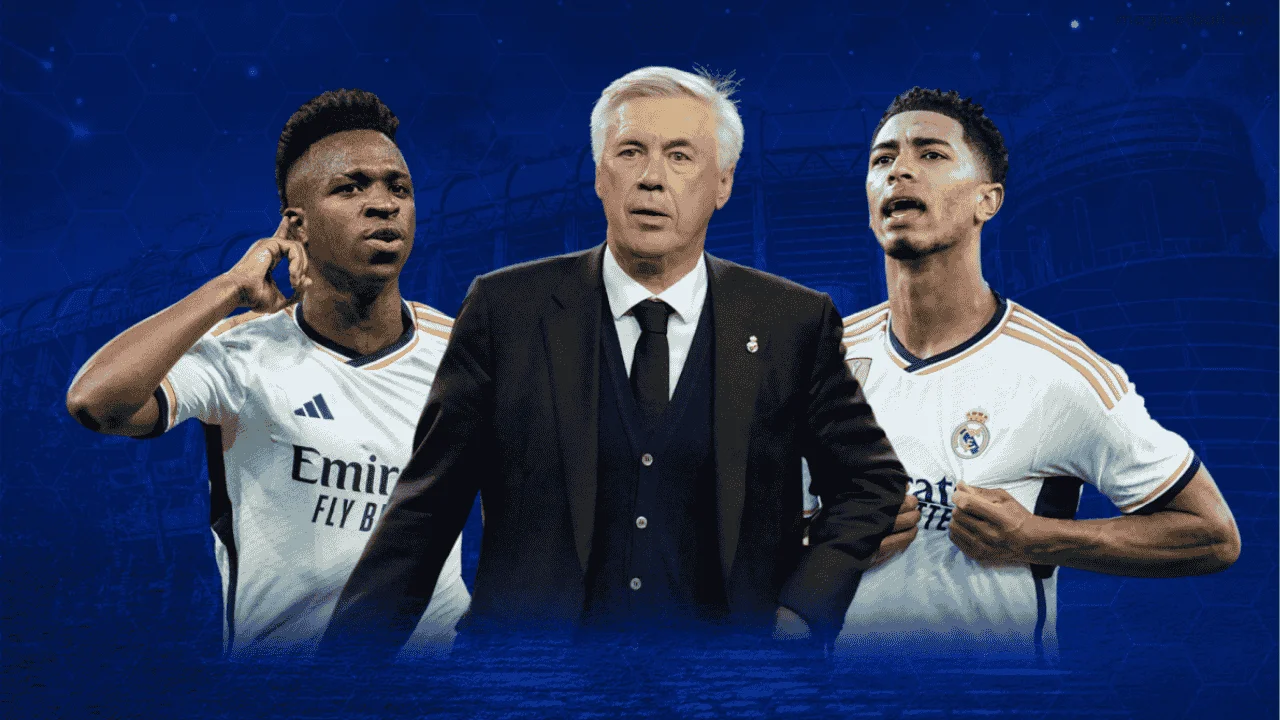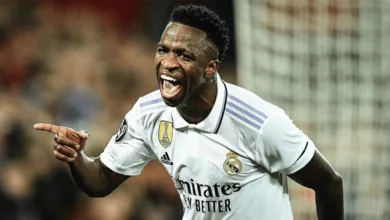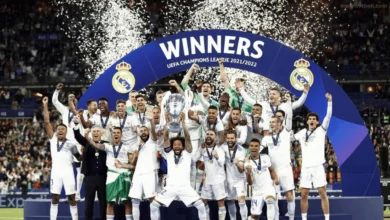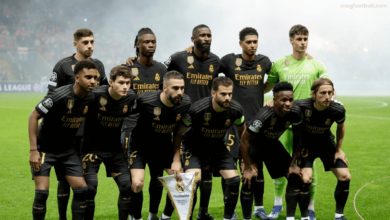Real Madrid’s Transfer Strategy: The Key to Their Success

Real Madrid’s transfer strategy has long been one of the main pillars behind the club’s success, both on and off the pitch. For over a century, the Spanish giants have dominated European and world football, and their ability to consistently sign top-tier talent has played a key role in that. From acquiring legendary players like Alfredo Di Stéfano and Cristiano Ronaldo to nurturing young talents like Vinícius Júnior and Eduardo Camavinga, Real Madrid’s transfer policy is both dynamic and visionary. This article will explore Real Madrid’s transfer strategy, its evolution over the years, and how it continues to be the driving force behind their unmatched success.
Table of Contents
A Legacy Built on Strategic Transfers
Real Madrid’s transfer strategy is not just about spending the most money but identifying and securing the right players to fit their system and culture. While they have been known for their big-money signings, their strategy also includes nurturing homegrown talent, targeting rising stars, and maintaining long-term goals for success.
The Galácticos Era: A New Chapter in Transfer History
One of the most famous eras in Real Madrid’s history is the Galácticos era, which began under the presidency of Florentino Pérez in the early 2000s. Pérez introduced a revolutionary transfer philosophy, focusing on signing a “galáctico,” or global superstar, each summer. This strategy aimed not only to strengthen the team but also to enhance the club’s global brand and commercial appeal.
The first galáctico signing was Luis Figo from arch-rivals Barcelona in 2000, a move that shocked the football world. This was followed by the arrivals of Zinedine Zidane in 2001, Ronaldo Nazário in 2002, David Beckham in 2003, and Michael Owen in 2004. These signings turned Real Madrid into a team of global superstars and significantly increased the club’s revenues through merchandise sales, sponsorship deals, and global television rights.
The Galácticos era wasn’t just about making a splash in the transfer market; it was about building a brand. The presence of superstars on the pitch made Real Madrid a more attractive option for international fans, corporate sponsors, and media companies. However, the strategy also had its drawbacks. Although the team performed well commercially, it didn’t always translate to consistent on-field success, with only a handful of league titles and one Champions League trophy during this period.
Building a Balance: Youth Development and Big Signings
Real Madrid’s transfer policy evolved after the initial Galácticos era, becoming more balanced between signing established stars and nurturing young talent. The importance of the La Fábrica—Real Madrid’s renowned youth academy—grew as the club began focusing on developing homegrown players who could step up to the first team.
Players like Iker Casillas, Raúl, and Guti came through the youth ranks and became club legends. In more recent years, Dani Carvajal, Lucas Vázquez, and Nacho have emerged from La Fábrica, showcasing the importance of having a strong youth development program to supplement high-profile signings. These academy graduates are not only talented but also deeply ingrained in the club’s culture, understanding the values and traditions that come with wearing the famous white shirt.
The Shift to Young Talent: The Next Generation of Superstars
In recent years, Real Madrid has shifted its transfer strategy to focus on securing young talents with immense potential. This is part of a long-term plan to build the next generation of superstars who can lead the club for years to come. Instead of splashing hundreds of millions of euros on established stars, Real Madrid has invested heavily in young players who can be developed into world-class talents.
The signings of Vinícius Júnior from Flamengo in 2018, Rodrygo from Santos in 2019, and Eduardo Camavinga from Rennes in 2021 are prime examples of this strategy. These players were signed as teenagers, and while they were relatively unknown to casual football fans at the time, they have quickly developed into key members of the squad. This approach allows Real Madrid to secure elite talent at a younger age before their market value skyrockets, ensuring long-term stability for the team.
The idea is to combine these young talents with experienced players already in the squad, creating a balanced team capable of competing for major honors. By signing players like Camavinga and Aurelien Tchouaméni, Real Madrid is not only investing in the present but also building a team for the future.
Transfer Strategy in the Post-COVID World
The COVID-19 pandemic significantly impacted the financial landscape of football. Clubs around the world faced revenue losses due to the absence of fans in stadiums, reduced merchandise sales, and diminished broadcasting revenues. Despite these challenges, Real Madrid has managed to navigate the post-pandemic world with a strategic and prudent transfer policy.
Unlike other top European clubs, Real Madrid avoided making any significant signings during the height of the pandemic, choosing instead to focus on managing their financial health. In fact, they were one of the few clubs that didn’t accumulate large debts, thanks to their cautious spending. Real Madrid’s transfer strategy during this period involved promoting players from the youth academy and carefully selecting which positions to strengthen.
When other clubs splurged post-pandemic, Real Madrid continued their patient approach. This cautious spending allowed them to stay financially healthy and make significant investments in future seasons, such as the acquisition of Tchouaméni in 2022.
The Role of Florentino Pérez in Real Madrid’s Transfer Strategy
President Florentino Pérez has been the architect of Real Madrid’s transfer success. Known for his ambitious vision and ability to close deals for high-profile players, Pérez’s leadership has shaped the club’s approach to transfers. His return to the presidency in 2009 marked the beginning of a new Galáctico era, with Cristiano Ronaldo, Kaká, and Karim Benzema arriving that same summer.
Pérez’s strategy revolves around not only securing talent but also maximizing the commercial potential of the players signed. His ability to market players globally has been key to Real Madrid’s success in becoming one of the richest and most valuable sports teams in the world.
Under Pérez’s leadership, Real Madrid also implemented a robust scouting network, which identifies young talents across the globe. This global scouting network, combined with the club’s financial strength, enables Real Madrid to act quickly when securing promising young players.
Galácticos 2.0: The Second Wave of Superstars
The signing of Cristiano Ronaldo in 2009 marked the beginning of the second Galácticos era. Ronaldo’s arrival for a then-record fee of £80 million transformed Real Madrid into a team that would dominate European football for the next decade. Alongside Karim Benzema, Gareth Bale, and later additions like Luka Modrić and Toni Kroos, Ronaldo led Real Madrid to four Champions League titles in five years between 2014 and 2018.
During this period, Real Madrid balanced their spending between big signings and shrewd acquisitions. The purchase of Modrić from Tottenham Hotspur for £30 million, for example, turned out to be one of the best bargains in modern football, with the Croatian midfielder playing a pivotal role in Real Madrid’s success.
Key Transfers that Defined Real Madrid’s Legacy
Over the years, several transfers have defined Real Madrid’s legacy. Here are some of the most important signings that shaped the club’s history:
- Alfredo Di Stéfano (1953) – The signing of Di Stéfano changed the course of European football. Di Stéfano led Real Madrid to five consecutive European Cup titles and became one of the greatest players in the club’s history.
- Cristiano Ronaldo (2009) – Ronaldo’s arrival turned Real Madrid into an unstoppable force in Europe. He scored 450 goals in 438 appearances and helped the club win four Champions League titles.
- Zinedine Zidane (2001) – Zidane’s arrival from Juventus for a then-world record fee of €77.5 million was a statement signing. Zidane repaid the faith by scoring one of the most iconic goals in football history in the 2002 Champions League final.
- Sergio Ramos (2005) – Signed from Sevilla for €27 million, Ramos became one of the greatest defenders in football history. His leadership and crucial goals helped Real Madrid win numerous titles, including four Champions League trophies.
- Vinícius Júnior (2018) – Vinícius’ signing marked a shift in Real Madrid’s transfer strategy towards younger talent. He has since developed into one of the most exciting young players in the world.
How Real Madrid’s Transfer Strategy Sets Them Apart
Real Madrid’s ability to adapt their transfer strategy has been key to their long-term success. While other clubs often rely on short-term fixes or spend recklessly, Real Madrid’s approach is calculated and focused on long-term sustainability. Their financial power, global scouting network, and ability to attract top talent make them a unique entity in world football.
Their blend of big-name signings, such as Gareth Bale and Eden Hazard, with emerging talents like Rodrygo and Reinier Jesus, ensures that the club remains competitive across all fronts. This flexibility, combined with a relentless drive to win, is what separates Real Madrid from other clubs.
Conclusion: The Future of Real Madrid’s Transfer Policy
As Real Madrid continues to compete at the highest level, their transfer strategy will remain a key factor in their success. The focus on young talent, combined with their ability to attract superstars, positions them well for the future. With players like Kylian Mbappé and Erling Haaland frequently linked with a move to the Bernabéu, Real Madrid’s transfer strategy remains one to watch in the coming years. The club’s ability to innovate and adapt ensures that they will continue to be a dominant force in world football for years to come.






